Unit - 1
Linear Measurements and Chain Survey
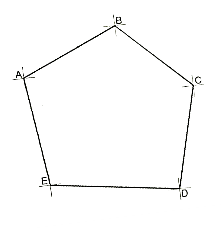
Fig.1.1: Compass Survey

Fig.1.2: Compass Survey
Key Takeaways:
The closed traverse is suitable for locating any existing structure, woods, boundaries of plots or lakes etc. Whereas the open traverse is suitable for locating details of long narrow strips like canal, roads or coast lines.
Metric chain :
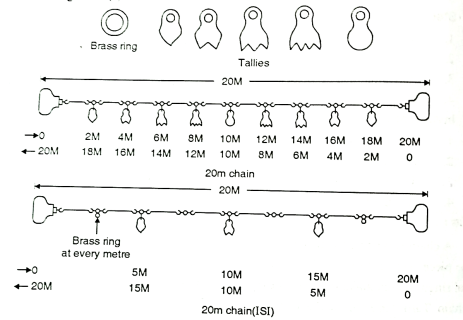
Fig.1.3: 20 m chain
Steel Band:
Engineer's chain:
Gunter's chain:
Revenue chain:
Chains have the following advantages:
They have the following disadvantages
Steel bands have the following advantages:
Key Takeaways:
There are five types of Chain:
Cloth or linen tape:
Metallic tape:
Steel tape:
Invar tape:
Key Takeaways:
There are four types of tape:
There are strategies for figuring out horizontal distance on sloping floor.
Direct Method of Chain Surveying:
Procedure:
Indirect Method of Chain Surveying:
Key Takeaways:
There are strategies for figuring out horizontal distance on sloping floor.
1. Chaining Free, Vision Obstructed
2. Chaining Obstructed, Vision Free
3. Chaining and Vision Both Obstructed.
Personal errors:
Instrumental errors:
Errors due to external reasons:
Key Takeaways:
There are three types of errors:
While selecting stations following criteria can be used:
Location sketch is a rough sketch of the station, the location of which is determined with reference to some permanent features like building or poles etc. Location sketches are useful if the survey station is to be relocated after the survey work is over.
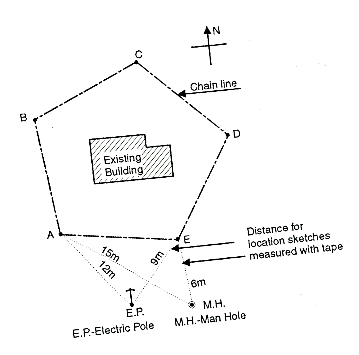
Fig.1.4: Compass Surveying
Key Takeaways:
There are three types of adjustment:
Whole circle bearing (W.C.B.) system:






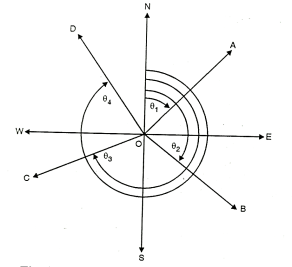
Fig.1.5: Whole Circle Bearing
Reduced bearing (Quadrantal system):
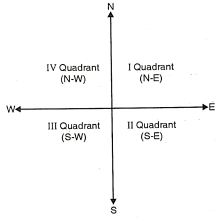
Fig.1.6: Reduced Bearing
Key Takeaways:
There are two types of bearing:
Detection of Local Attraction:
Note: (1) If F.B.-B.B. =180°; free from local attraction / same local attraction.
(2) IF.B.-B.B. 180": affected by local attraction.
180": affected by local attraction.
Key Takeaways:
The deviation of the magnetic needle from its normal position (North direction) under the influence of external forces is called as local attraction.
Method 1:
Method II :
References: